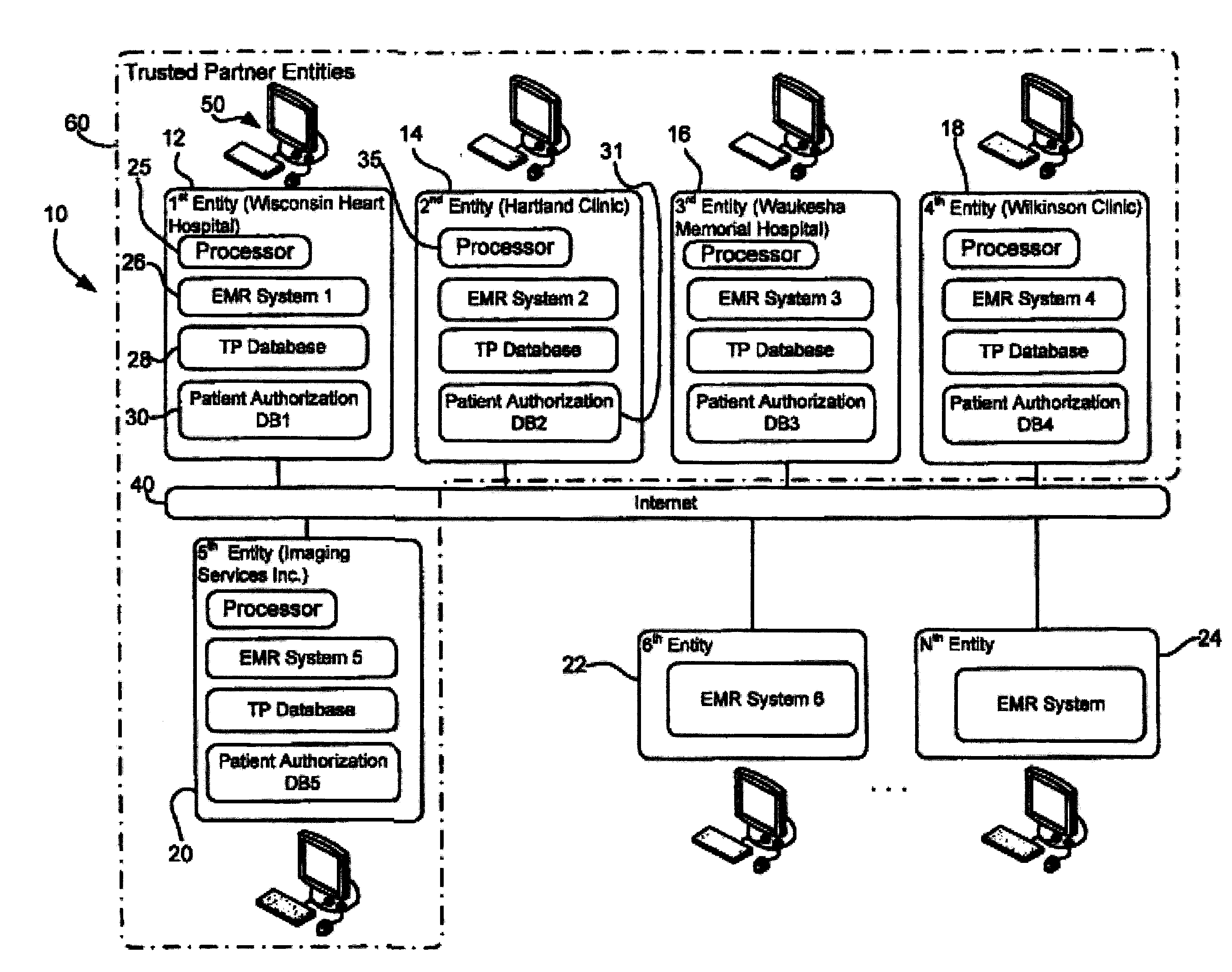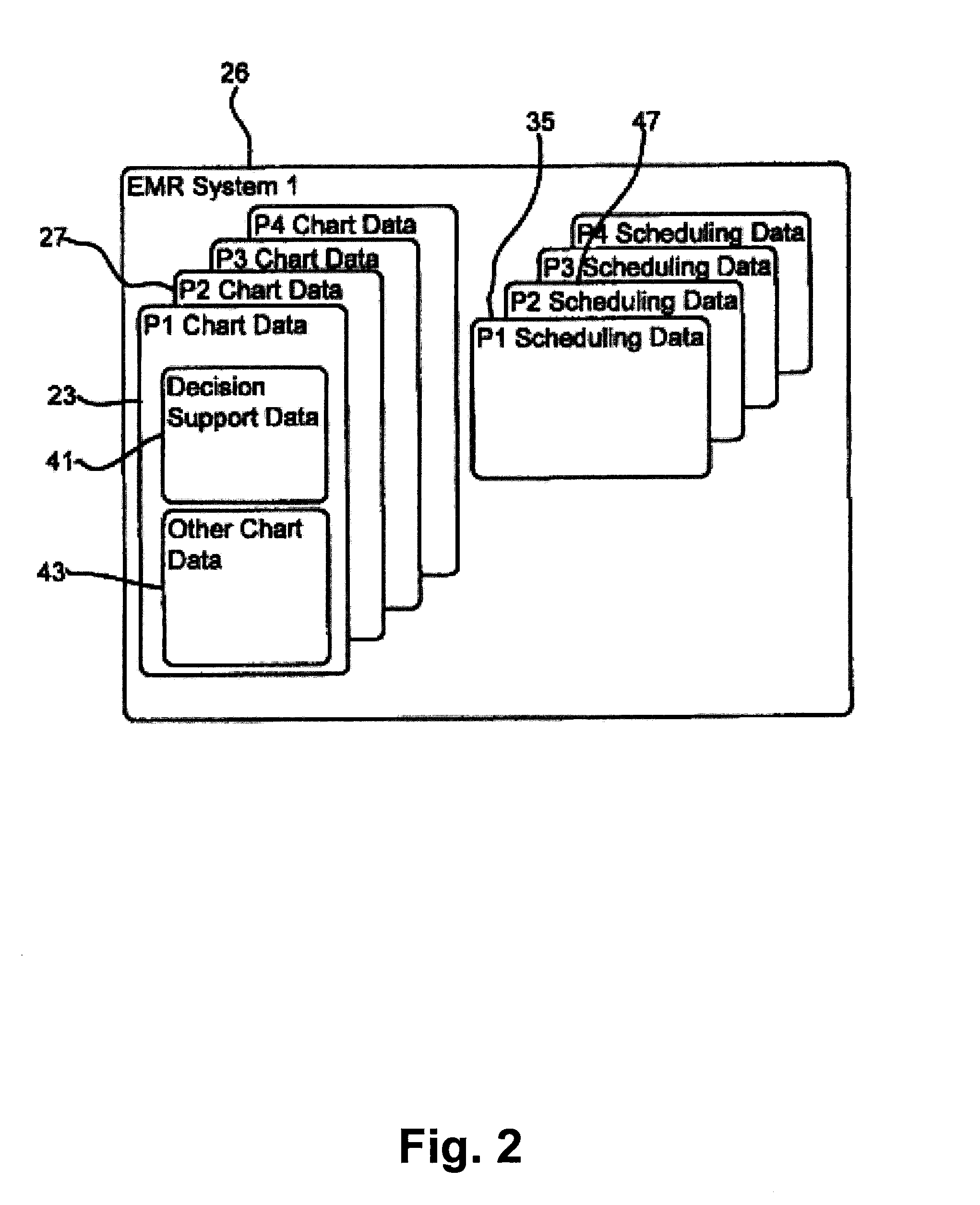One major shortcoming of separate EMR systems is that the separate systems result in barriers between physicians and patient data required to facilitate optimal patient services.
Thus, where a physician accesses only a single EMR system (i.e., the EMR system maintained by a facility / entity that the physician works at) to obtain
medication information for a patient, often times the physician will only have access to incomplete
medication information that specifies a subset of the medications that a patient is currently taking or has taken The physician does not have access to
medication information in any other EMR systems and therefore may have incomplete information.
Without knowing schedule information from multiple EMR systems, it is essentially impossible for a scheduling physician to optimally schedule future activities for a patient.
Multiple authorizations and requests are burdensome to both patients and physicians.
While this solution facilitates the option to update an EMR system with current information, the manual acceptance requirement is burdensome.
Third, in many cases, when patient charts or schedule data is obtained from first and second different EMR systems, the charts / data are presented to a physician as separate information sets which makes it cumbersome to locate, view and comprehend all
relevant information.
In fact, in the present example, when first and second charts from first and second separate EMR systems are presented, they are typically presented in separate data screens or views requiring a physician to switch back and forth among the shots to view the entire allergies
list, which is time-consuming and potentially confusing as a physician attempts to reconcile differences between the two lists.
The problem of separate chart views is exacerbated when a physician accesses patient data from more than two separate EMR systems as movement and reconciliation is required among several different screens.
Similar problems occur when scheduling information is accessed from separate EMR systems as the different schedules are not integrated and instead are presented as multiple different views.
Fourth,
push and pull chart sharing processes between separate entities that call for transmission of large and detailed patient charts can require several minutes to complete.
Unfortunately, chart sharing and schedule sharing processes are commonplace and will likely increase in the future and
execution time delay will become more annoying to system users.
Fifth, patient
authorization for entities to share data are typically for relatively short periods of time (e.g., one month or one visit) and / or usually authorize only limited sharing of data.
For this reason, often multiple patient authorizations are required for sharing among two entities which is annoying to many patients and which can slow down the process of
patient care.
One problem with the centralized
exchange model is that it requires a large and often times expensive centralized infrastructure including servers, systems, administrators, etc.
Another problem with the centralized
exchange model is that centralized exchange data is often times not well maintained since physicians are not directly using these systems.
In many other cases, upon affiliation, each separate institution already has a legacy EMR system and moving to a single EMR system is considered cost prohibitive.
Thus, accessing all patient charts from all affiliated institutions is
time consuming and the end result, separate charts, is cumbersome to comprehend and use.
 Login to View More
Login to View More  Login to View More
Login to View More 


